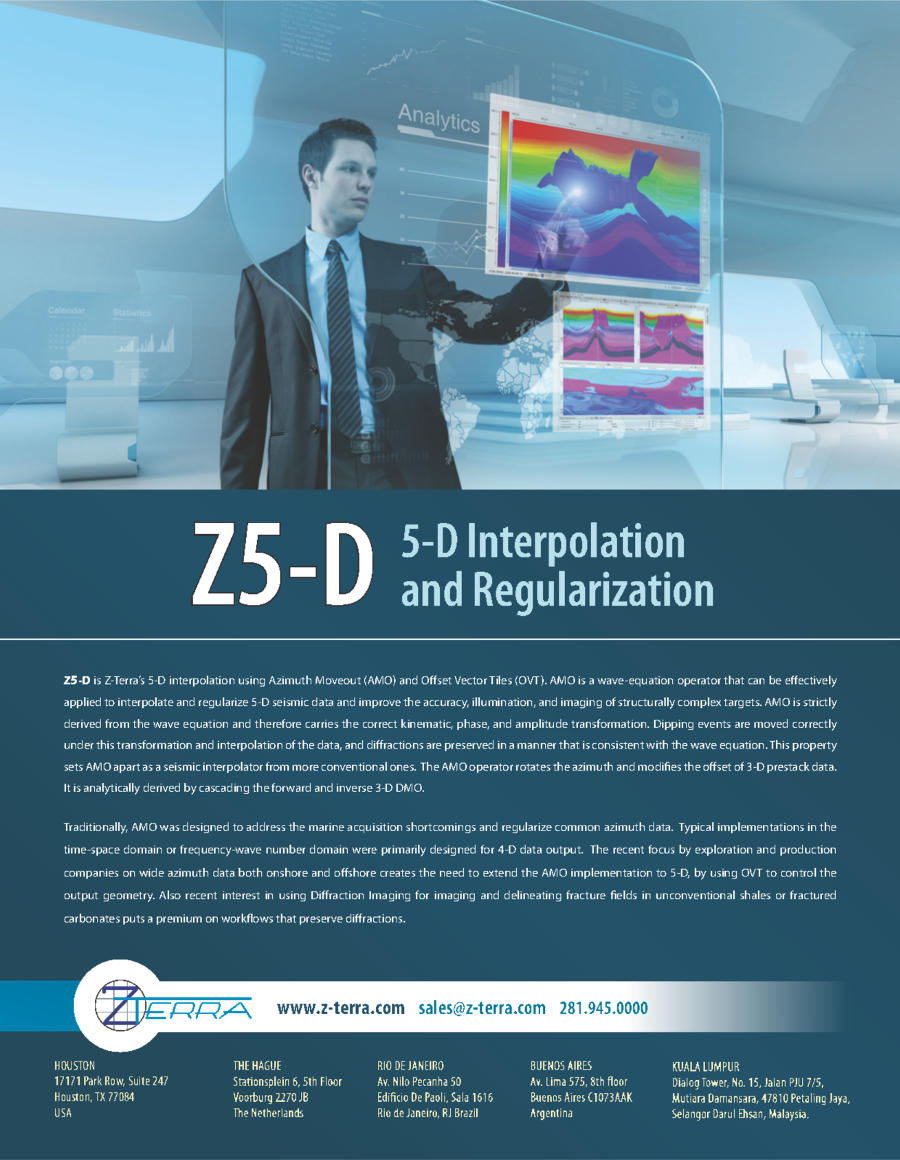5-D interpolation and regularization using azimuth moveout and offset vector tiles
- Preserve diffractions and the kinematics, phase, and amplitude of dipping events
- Eliminate migration artifacts in wide azimuth data
- Improve the results of AVO and AVAz
- Improve the results of diffraction imaging and obtain superior resolution images of small scale, complex structural details
- Wave equation consistent operator
- Aperture taper and extent constraints
- Overcome acquisition constraints: irregular acquisition geometry, low fold regions, large acquisition gaps, large bin sizes, coarsely sampled acquisition patterns, and inhomogenous surveys to be merged
- Avoid reshooting surveys
- OBC, land or marine data
- Complex geological environments
- Output offset vector tiles
- Regular or user defined output grids
- Migration in the OVT domain preserves offset and azimuth information (e.g., azimuthal anisotropy which must be incorporated for optimum image quality). Migrated azimuthal attributes are valuable for subsurface characterization (e.g., characterization of fracture orientation, fracture density, permeability, porosity, and stress characteristics). Understanding these attributes allows interpreters to optimize well placement and production
- Output sector tiles
- Output fold, offset, and azimuth constraints
- Frequency-domain output amplitude scaling
- Frequency distortion constraints
- Anti-aliasing: triangles, boxcar, M-bandpass
Intuitive Graphical User Interface
- Multidimensional data viewer: synchronously scroll through up to 9 volumes
- Basemap viewer for visualizing input data and velocity model geometry and output grid definition
- Data viewer for input/output gathers and velocity model
Efficient Parallelization
- Optimization of data distribution on parallel nodes
- Job monitoring, add and subtract nodes during runtime
- Checkpoint restart
- Adaptive runtime parameter optimization
- 64-bit, for x64-86 architecture processors (also known as x64, x64_86, AMD64, EMT64T, Intel 64)
- Red Hat® Enterprise Linux® (or compatible) 4.8 and above, 5.3 and above, 6.0 and above

